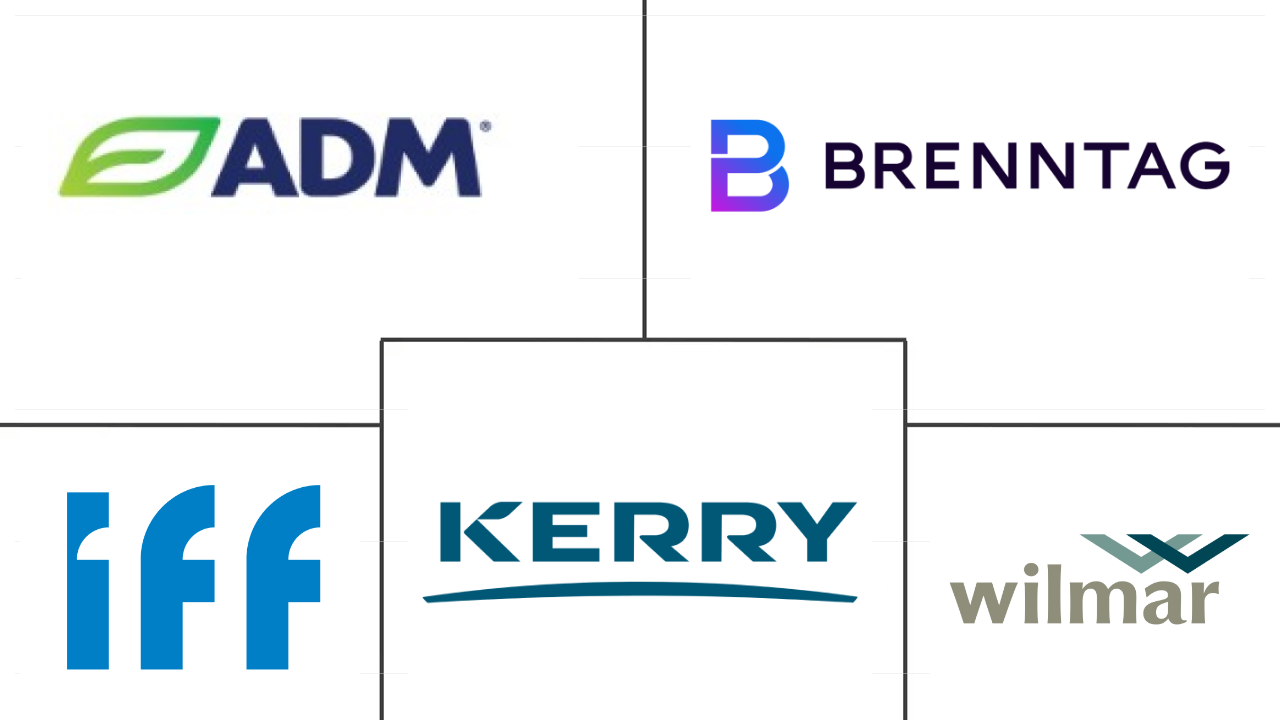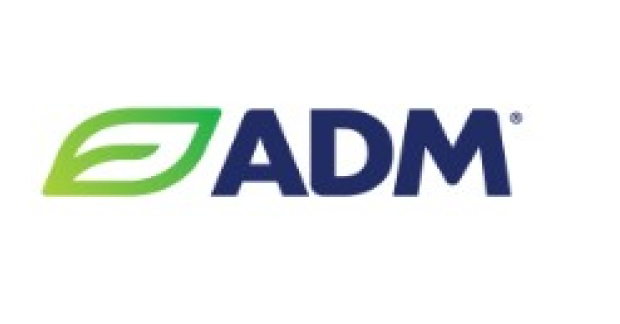Market Size of united kingdom soy protein Industry
| Icons | Lable | Value |
|---|---|---|
|
|
Study Period | 2017 - 2029 |
|
|
Market Size (2024) | USD 203.4 Million |
|
|
Market Size (2029) | USD 243.6 Million |
|
|
Largest Share by End User | Food and Beverages |
|
|
CAGR (2024 - 2029) | 3.67 % |
|
|
Fastest Growing by End User | Supplements |
|
|
Market Concentration | Low |
Major Players |
||

|
||
|
*Disclaimer: Major Players sorted in no particular order |
United Kingdom Soy Protein Market Analysis
The United Kingdom Soy Protein Market size is estimated at 203.4 million USD in 2024, and is expected to reach 243.6 million USD by 2029, growing at a CAGR of 3.67% during the forecast period (2024-2029).
203.4 Million
Market Size in 2024 (USD)
243.6 Million
Market Size in 2029 (USD)
4.24 %
CAGR (2017-2023)
3.67 %
CAGR (2024-2029)
Largest Market by Form
44.75 %
value share, Isolates, 2023
Constant research and innovations, mainly in animal feed, support the application of soy protein isolates, which is projected to drive the applications of the ingredient.
Largest Market by End User
52.25 %
value share, Food and Beverages, 2023
The F&B industry dominates the market, primarily led by meat and dairy alternatives, due to their functionalities that make them highly preferred ingredients.
Fastest Growing Market by Form
4.15 %
Projected CAGR, Isolates, 2024-2029
Hydrolyzed or textured soy proteins are gaining application mainly in meat alternative products as these are available in dice forms, chunks, or crumbles for ease of use.
Fastest Growing Market by End User
9.42 %
Projected CAGR, Supplements, 2024-2029
The rising consumer focus on health and sports fitness is anticipated to drive the segment. The preference for soy in this sector is propelling segmental growth.
Leading Market Player
16.64 %
market share, Archer Daniels Midland Company, 2021

The company, under its Alternative Proteins for Sustainable and Nutritious Foods division, sell soy protein ingredients (isolates, concentrates, textured protein, and crisps), which they manufacture for both food and feed grades.
F&B and animal feed together accounted for major share in 2022 due to increasing demand for plant based protein products coupled with rising pet population across the country
- The applications of soy protein in the UK market are majorly dominated by the food and beverage segment. In 2022, soy protein was mainly driven by applications in the meat and meat alternative products sub-segment, followed by dairy and dairy alternative products, accounting for 23.83% and 21.04% by volume, respectively.
- UK consumers are shifting from animal protein products to plant-based protein products due to rising health consciousness. Soy protein continues to be customers' preferred option among all other plant-based proteins. In 2021, around 60% of UK consumers shifted toward plant-based products as they are considered healthier. More people are turning to vegan protein-based meat replacements due to the rising allergic reactions to animal proteins. In the United Kingdom, the consumption of soy-based foods is also encouraged by the government and various associations, which is further boosting the demand for soy protein-fortified foods in the country.
- Animal feed held the second major share in the market. It is projected to register a CAGR of 2.14%, by value, during the forecast period. Soybean meal, which is the by-product of oil extraction, has a high crude protein content of 44-50% and a balanced amino acid composition, making it complementary to maize meal for feed formulations. In pet food, soy protein concentrates are typically used as a partial substitute for meat and meat meal ingredients and as a meat extender in dry and canned pet foods. The UK pet population increased from 9.6 million in 2020 to 10.2 million in 2021, thus boosting the demand for soy protein in pet food formulations.
United Kingdom Soy Protein Industry Segmentation
Concentrates, Isolates, Textured/Hydrolyzed are covered as segments by Form. Animal Feed, Food and Beverages, Supplements are covered as segments by End User.
- The applications of soy protein in the UK market are majorly dominated by the food and beverage segment. In 2022, soy protein was mainly driven by applications in the meat and meat alternative products sub-segment, followed by dairy and dairy alternative products, accounting for 23.83% and 21.04% by volume, respectively.
- UK consumers are shifting from animal protein products to plant-based protein products due to rising health consciousness. Soy protein continues to be customers' preferred option among all other plant-based proteins. In 2021, around 60% of UK consumers shifted toward plant-based products as they are considered healthier. More people are turning to vegan protein-based meat replacements due to the rising allergic reactions to animal proteins. In the United Kingdom, the consumption of soy-based foods is also encouraged by the government and various associations, which is further boosting the demand for soy protein-fortified foods in the country.
- Animal feed held the second major share in the market. It is projected to register a CAGR of 2.14%, by value, during the forecast period. Soybean meal, which is the by-product of oil extraction, has a high crude protein content of 44-50% and a balanced amino acid composition, making it complementary to maize meal for feed formulations. In pet food, soy protein concentrates are typically used as a partial substitute for meat and meat meal ingredients and as a meat extender in dry and canned pet foods. The UK pet population increased from 9.6 million in 2020 to 10.2 million in 2021, thus boosting the demand for soy protein in pet food formulations.
| Form | |
| Concentrates | |
| Isolates | |
| Textured/Hydrolyzed |
| End User | ||||||||||||
| Animal Feed | ||||||||||||
| ||||||||||||
|
United Kingdom Soy Protein Market Size Summary
The United Kingdom soy protein market is experiencing a notable shift towards plant-based protein products, driven by increasing health consciousness among consumers. The food and beverage sector dominates the market, with significant applications in meat and meat alternative products, as well as dairy and dairy alternatives. This trend is further supported by a growing preference for vegan protein-based meat replacements due to allergic reactions to animal proteins. The UK government and various associations are promoting the consumption of soy-based foods, which is enhancing the demand for soy protein-fortified products. The market is also witnessing a rise in the use of soy protein in animal feed, particularly in pet food, as a partial substitute for meat ingredients, driven by the increasing pet population.
The market landscape is characterized by a fragmented structure, with major players like Archer Daniels Midland Company, Brenntag SE, International Flavors & Fragrances, Inc., Kerry Group PLC, and Wilmar International Ltd holding significant shares. The emergence of the protein sector is seen as a potential solution to reduce the environmental impact associated with animal protein reliance. Millennials and Gen Z are key drivers of the growing demand for plant-based diets, as they seek alternatives that provide essential amino acids without the environmental footprint of animal protein. The market is poised for growth, with the per capita consumption of soy protein showing a favorable increase, aligning with the UK's broader dietary shifts towards healthier and more sustainable food options.
United Kingdom Soy Protein Market Size - Table of Contents
-
1. MARKET SEGMENTATION (includes market size in Value in USD and Volume, Forecasts up to 2029 and analysis of growth prospects)
-
1.1 Form
-
1.1.1 Concentrates
-
1.1.2 Isolates
-
1.1.3 Textured/Hydrolyzed
-
-
1.2 End User
-
1.2.1 Animal Feed
-
1.2.2 Food and Beverages
-
1.2.2.1 By Sub End User
-
1.2.2.1.1 Bakery
-
1.2.2.1.2 Beverages
-
1.2.2.1.3 Breakfast Cereals
-
1.2.2.1.4 Condiments/Sauces
-
1.2.2.1.5 Dairy and Dairy Alternative Products
-
1.2.2.1.6 Meat/Poultry/Seafood and Meat Alternative Products
-
1.2.2.1.7 RTE/RTC Food Products
-
1.2.2.1.8 Snacks
-
-
-
1.2.3 Supplements
-
1.2.3.1 By Sub End User
-
1.2.3.1.1 Baby Food and Infant Formula
-
1.2.3.1.2 Elderly Nutrition and Medical Nutrition
-
1.2.3.1.3 Sport/Performance Nutrition
-
-
-
-
United Kingdom Soy Protein Market Size FAQs
How big is the United Kingdom Soy Protein Market?
The United Kingdom Soy Protein Market size is expected to reach USD 203.41 million in 2024 and grow at a CAGR of 3.67% to reach USD 243.63 million by 2029.
What is the current United Kingdom Soy Protein Market size?
In 2024, the United Kingdom Soy Protein Market size is expected to reach USD 203.41 million.

